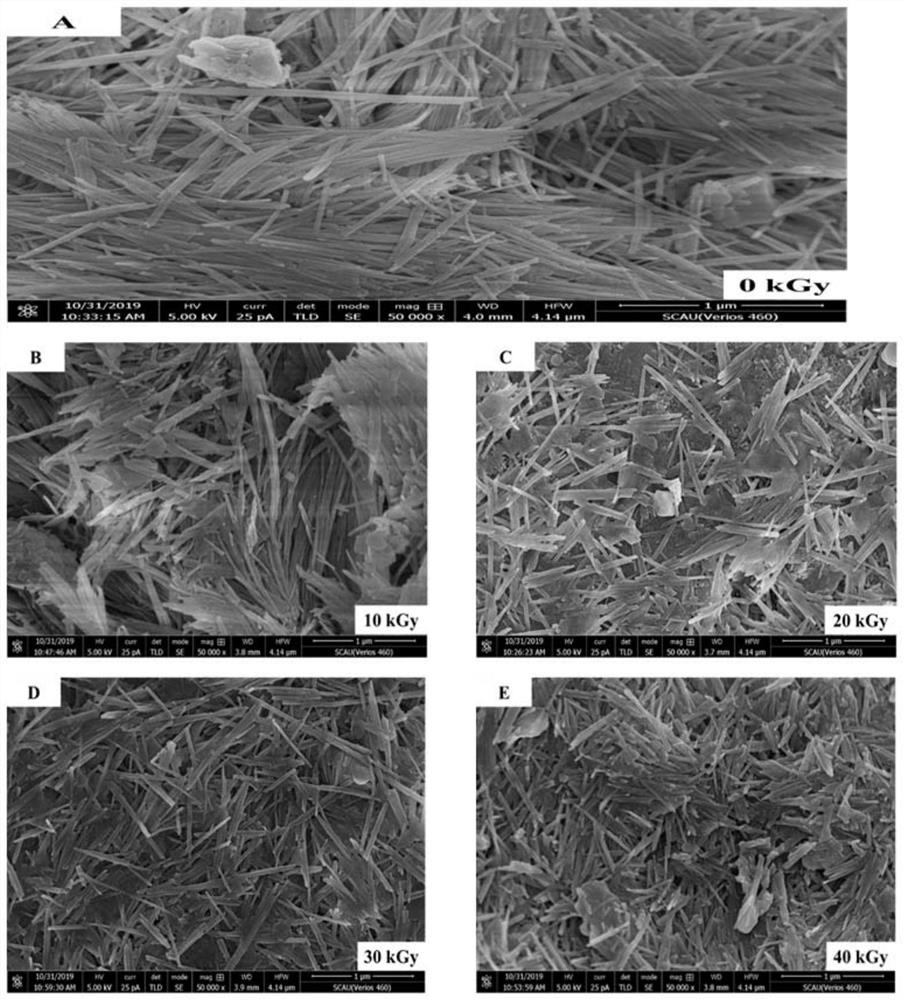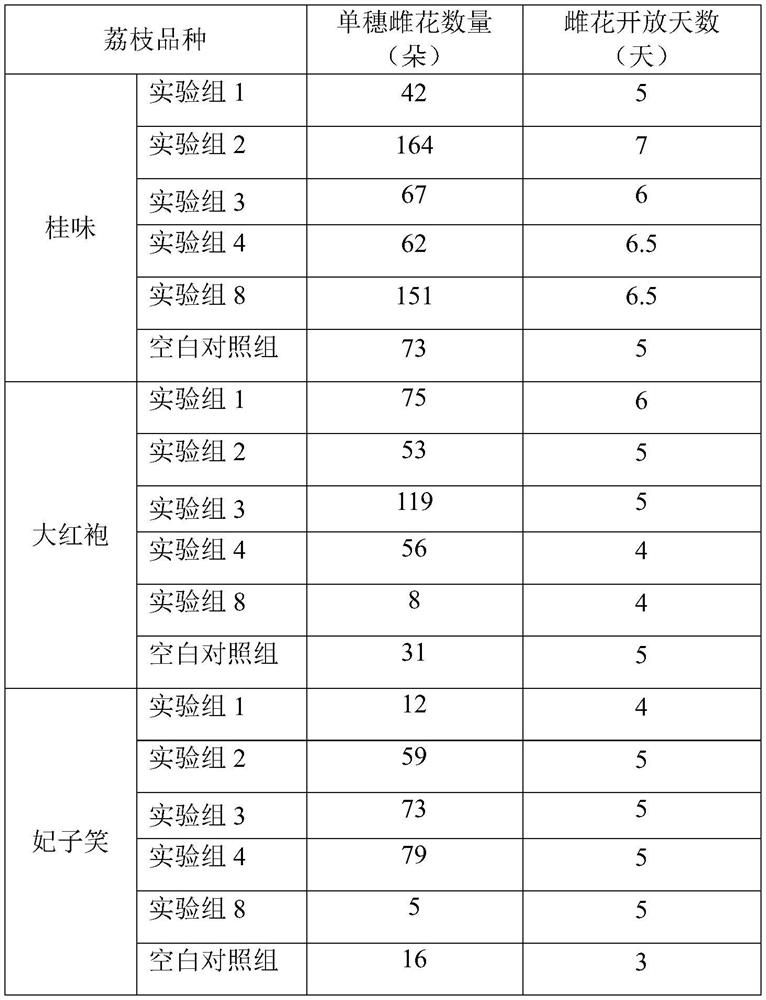A Nano-titanium Dioxide Composite Reagent for Improving Litchi Flowering Pollination and Fertilization Ability
A technology of nano-titanium dioxide and composite reagent, applied in the field of plant cultivation, can solve problems such as shortage
- Summary
- Abstract
- Description
- Claims
- Application Information
AI Technical Summary
Problems solved by technology
Method used
Image
Examples
Embodiment 1
[0028] The preparation of embodiment 1 nanometer carbon dioxide composite reagent
[0029] 1. Irradiation treatment of attapulgite
[0030] Attapulgite (ATP) is a kind of nanoclay because of its nanorod structure, large specific surface area and high adsorption capacity. However, ATP nanorods tend to aggregate together to form bundles, which greatly limits the application of ATP. Therefore, in order to improve the dispersion of ATP to increase its performance, HEEB (high-energy electron beam) irradiation is used to separate ATP from each other to form a network structure, so that more nano-titanium dioxide can be effectively adsorbed on ATP.
[0031] Such as figure 1 , the SEM observation of the attapulgite after irradiation modification by different irradiation doses found that the unmodified attapulgite was densely distributed in bundles, and after increasing the irradiation dose of 10, 20, 30, 40kGy, in After treatment with 30kGy dose, the fascicular distribution is more...
Embodiment 2
[0039] Embodiment 2 Nano-titanium dioxide composite reagent improves the growth of litchi flowers and fruits
[0040]Prepare a certain concentration of nano-titanium dioxide composite reagent (the concentration of the prepared nano-titanium dioxide composite reagent is based on the concentration of nano-titanium dioxide, and the concentration of nano-titanium dioxide is 150, 300, 450, 600, 900mg / L respectively) in the flower buds During the early stage, the whole plant is treated, and the flower spikes are sprayed emphatically, and sprayed until water drops drip. The treatment combination is: (1), the experimental group (clear weather), that is, spraying a certain concentration of nano-titanium dioxide composite reagent: including experimental group 1 to experimental group 5 (the concentration of titanium dioxide in the sprayed nano-titanium dioxide composite reagent is 150 , 300, 450, 600, 900mg / L); (2), the blank control group (clear weather) was sprayed with clear water.
...
Embodiment 3
[0066] Embodiment 3 Nano-titanium dioxide composite reagent improves the effect of artificial pollination of litchi flowering period
[0067] The present embodiment investigates the effect of nano-titanium dioxide composite reagent on the stigma receptivity of pistil after artificial pollination of litchi, and the specific process is as follows:
[0068] Litchi often has no bees to pollinate during the cloudy and rainy flowering period, and artificial pollination is required. The treatment group prepares pollen liquid pollination with the nano-titanium dioxide composite reagent of certain concentration (in the prepared nano-titanium dioxide composite reagent, the concentration of nano-titanium dioxide is respectively 0, 150, 300, 450, 600mg / L); 150mg / L nano-titanium dioxide composite reagent, the quality of nano-titanium dioxide in 1L nano-titanium dioxide composite reagent solution is 150mg, the quality of attapulgite and biochar are 30mg, 7.5mg respectively; the mass concent...
PUM
 Login to View More
Login to View More Abstract
Description
Claims
Application Information
 Login to View More
Login to View More - R&D
- Intellectual Property
- Life Sciences
- Materials
- Tech Scout
- Unparalleled Data Quality
- Higher Quality Content
- 60% Fewer Hallucinations
Browse by: Latest US Patents, China's latest patents, Technical Efficacy Thesaurus, Application Domain, Technology Topic, Popular Technical Reports.
© 2025 PatSnap. All rights reserved.Legal|Privacy policy|Modern Slavery Act Transparency Statement|Sitemap|About US| Contact US: help@patsnap.com



